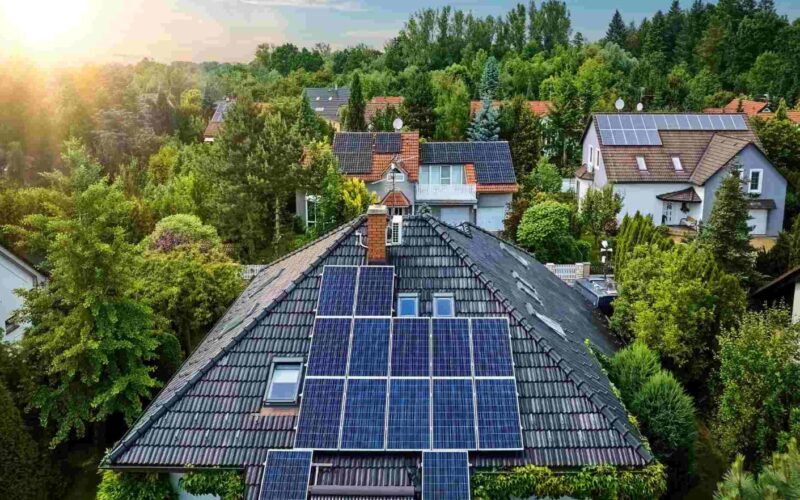As solar energy becomes an increasingly popular and accessible option for house owners and businesses, many people wonder just how much energy solar panels can produce. The answer to this question depends on a variety of factors, including the type used, the size of the system, geographic location, and the amount of sunlight the panels receive. Understanding these factors can help you better estimate the energy output and determine whether green power is the right choice for your energy needs.
Understanding Solar Panel Efficiency
The energy output is largely determined by their efficiency, and solar efficiency refers to the percentage of sunlight that a panel can convert into usable electricity. Most residential options have an efficiency rate between 15% and 22%. Higher efficiency setups can produce more electricity in a given amount of space, which is particularly important for homes with limited roof space.
For example, a solar panel with 20% efficiency can convert 20% of the sunlight that hits it into electricity, while the remaining 80% is reflected, absorbed as heat, or otherwise lost. Although higher efficiency selections tend to be more expensive, they can generate more power in less space, making them a worthwhile investment for many homeowners.
Calculating Solar Panel Output
The power output of a solar panel is typically measured in watts (W). This measurement indicates how much electricity one can produce under ideal conditions, such as full sunlight. Most residential options on the market today range from 250 to 400 watts per.
To estimate the total energy production of a system, you’ll need to consider the number of installed and the wattage of each panel. For example, one with 10 panels, each rated at 300 watts, would have a total system size of 3,000 watts, or 3 kilowatts (kW). The energy output of the system is then calculated by multiplying the total wattage by the number of hours the system is expected to receive sunlight each day.
Geographic Location and Sunlight Exposure
The amount of sunlight your location receives is a critical factor in determining how much energy your system will produce. Areas closer to the equator, with sunnier climates, typically receive more sunlight and therefore produce more energy. Conversely, regions with less sunlight, frequent cloud cover, or higher latitudes may see lower energy output.
In the United States, for example, solar panels in sunny states like Arizona or California can produce significantly more energy than those installed in cloudier regions like the Pacific Northwest. To estimate energy production in your area, you can use tools like the National Renewable Energy Laboratory’s (NREL) PVWatts Calculator, which takes into account geographic location, local weather patterns, and system specifications.
Impact of Roof Orientation and Tilt
The orientation and tilt of your solar panels also play a significant role in their energy production. Ideally, they should be installed facing south (in the Northern Hemisphere) to maximize exposure to the sun throughout the day. East- and west-facing setups can still produce substantial amounts of energy, but their output may be slightly lower than south-facing ones.
The angle at which your panels are installed also affects their efficiency, as ones that are tilted at the same angle as your latitude can capture more sunlight, particularly during peak sun hours. However, the optimal tilt angle may vary depending on your location and roof structure. In some cases, adjustable mounts can be used to optimize tilt seasonally. To get the best tilt angle, it’s important to work with experts like the ones at EVOLV Solar – for more information, visit their website here: https://evolvsolar.com/
Seasonal Variations in Energy Production
Solar panels produce varying amounts of energy throughout the year due to seasonal changes in sunlight. During summer months, when days are longer and the sun is higher in the sky, the system can produce more energy. In contrast, energy production typically decreases in the winter months due to shorter days and lower sun angles.
Despite these seasonal variations, solar panels are still effective year-round. In many regions, the increased production during the summer months can offset lower production during the winter, allowing homeowners to achieve a balanced energy output over the course of the year.
Estimating Annual Energy Production
To estimate how much energy your solar panels will produce annually, you can multiply your system’s size in kilowatts by the average number of sunlight hours your location receives each day and then by 365 days. For example, a 5 kW system in a location that receives 5 hours of sunlight per day could produce approximately 9,125 kilowatt-hours (kWh) of electricity per year (5 kW x 5 hours x 365 days).
This calculation provides a general estimate, but actual energy production can vary based on factors like shading, weather conditions, and system maintenance.
Maximizing Solar Energy Output
The amount of energy your solar panels produce depends on various factors, including efficiency, geographic location, roof orientation, and sunlight exposure. By understanding these factors and carefully planning your installation, you can maximize the energy output of your system and make the most of this renewable energy source. Whether you’re considering green power for environmental reasons, cost savings, or energy independence, knowing how much energy your system can produce will help you make an informed decision and optimize the benefits of solar energy.
